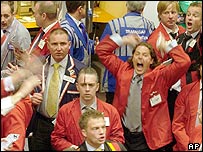
Google has finally unveiled its Cost Per Action tariff model for its Adsense network. What was the exclusive domain of affiliate marketing networks is disrupted by Google’s huge publisher and merchant base, and its superior system. In one move, Google becomes the biggest affiliate network in the sector.
The impact on the online advertising ecosystem will be considerable. Not only to affiliate networks, but also to the community of market makers – affiliates, which have thrived on arbitrage opportunities around CPM, CPC and CPA advertising. CPM (Costs per Thousand banner impressions), CPC (cost per click) and CPA (cost per action). The different tariff models provided enough market inefficiency for price imbalances to arise.
Over the last few years entrepreneurial affiliates have been acquiring traffic from Google’s adsense at the minimum 0.01 per click, and driving it directly to an affiliate network merchant’s site under the CPA tariff model, and got paid when and if the customer converted. The arbitrage actually resulted in positive margins. And many other similar arbitrage moves.
Google’s offer of the CPA tariff model to advertisers adds new price transparency, as clients can now work out the ROI of all three tariff models on one simple user interface. The arbitrage opportunities will invariably dissappear.
Clear winners are advertisers; CPA tariff model pushes the onus of conversion onto the publisher. The advertising merchant only pays if the clickthrough actually makes a purchase. CPA is the solution for advertisers with click-fraud problems.





